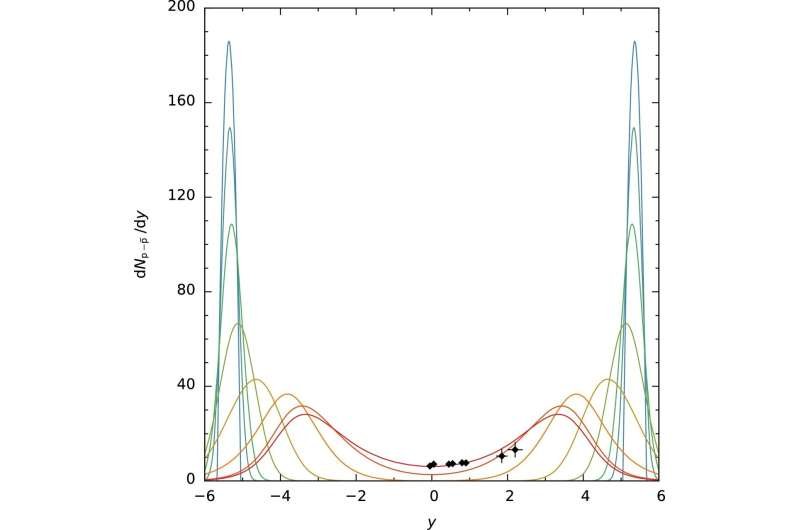The Daily Observer London Desk: Reporter- John Furner
When two heavy ions collide at very high relativistic energies, they penetrate one another, during which they become excited and are slowed down. This “stopping” process can be generated experimentally, as demonstrated on the Large Hadron Collider (LHC) at Europe’s CERN research center in Geneva (Switzerland).
So far, however, the stopping process cannot be directly observed at the LHC. An international team led by Prof. Dr. Georg Wolschin, a physicist at Heidelberg University, recently calculated how the stopping process might look during collisions at very high energies in the LHC. The researchers hope to also gain new insights into original states of matter in the early universe, especially on the interaction of quarks—the material components of protons and neutrons—with gluons.
Heavy ions like the nuclei of atoms of larger mass—such as gold or lead—are positively charged and can be accelerated in electrical fields to nearly the speed of light. They are used, in particular, in studying the so-called quark-gluon plasma. In this original state of matter, the elementary quark and gluon particles move freely before forming protons, neutrons, or other strongly interacting particles.
In the early universe after the Big Bang, there was a very similar exotic state of matter lasting about ten microseconds, explains Georg Wolschin of Heidelberg University’s Institute for Theoretical Physics. This state can be generated today using particle accelerators like the LHC very briefly for about 10-23 seconds but can only be observed indirectly rather than directly.
“During the collision of heavy ions, they are slowed down, and at the same time new elementary particles are created,” explains Prof. Wolschin. Although the stopping process can be precisely measured at lower energies, until now it has not been possible to record the stopping of heavy ions at sufficiently small angles at the very high LHC acceleration energies.
A measurement perpendicular to the beam as is possible already at the Large Hadron Collider is not sufficient to obtain a complete picture, explains the physicist. In collaboration with colleagues from Heidelberg and Japan, Georg Wolschin used a nonequilibrium-statistical model to predict how this stopping process could look.
The physicists based their calculations on a relativistic diffusion model. This model emerges from a nonequilibrium-statistical theory and is consistent with quantum chromodynamics—the theory of strong interactions, which deals with one of the four fundamental forces of physics. The researchers first compared existing data from measurements at lower energies with their model.
“These data can be described well using our relativistic diffusion model,” states Prof. Wolschin. On that basis it was then possible to derive theoretical predictions on the stopping behavior of heavy ions at the higher acceleration energies in the teraelectronvolt energy range at the LHC. However, to be able to compare them with data from experimental measurements first requires additional measurement equipment at the Large Hadron Collider, emphasizes the researcher.
Using their calculations, the researchers expect future experimental measurements at the Large Hadron Collider not only to confirm the predicted stopping behavior but also provide new insights into the properties of gluons. In quantum chromodynamics, these massless particles are the carrier particles of strong interaction.
They mediate the forces between quarks and are also indirectly responsible for the attraction between protons and neutrons in an atomic nucleus. Particle collisions in the LHC generate high temperatures, explains Georg Wolschin. In the process, gluons can interact with one another elastically, i.e. without changing the number of particles, or inelastically, i.e. generating or destroying particles.
“Through elastic interactions, a new state of matter, the gluon condensate, could in principle arise. It should be possible to derive the conditions under which this state can be achieved,” explains the Heidelberg physicist.



